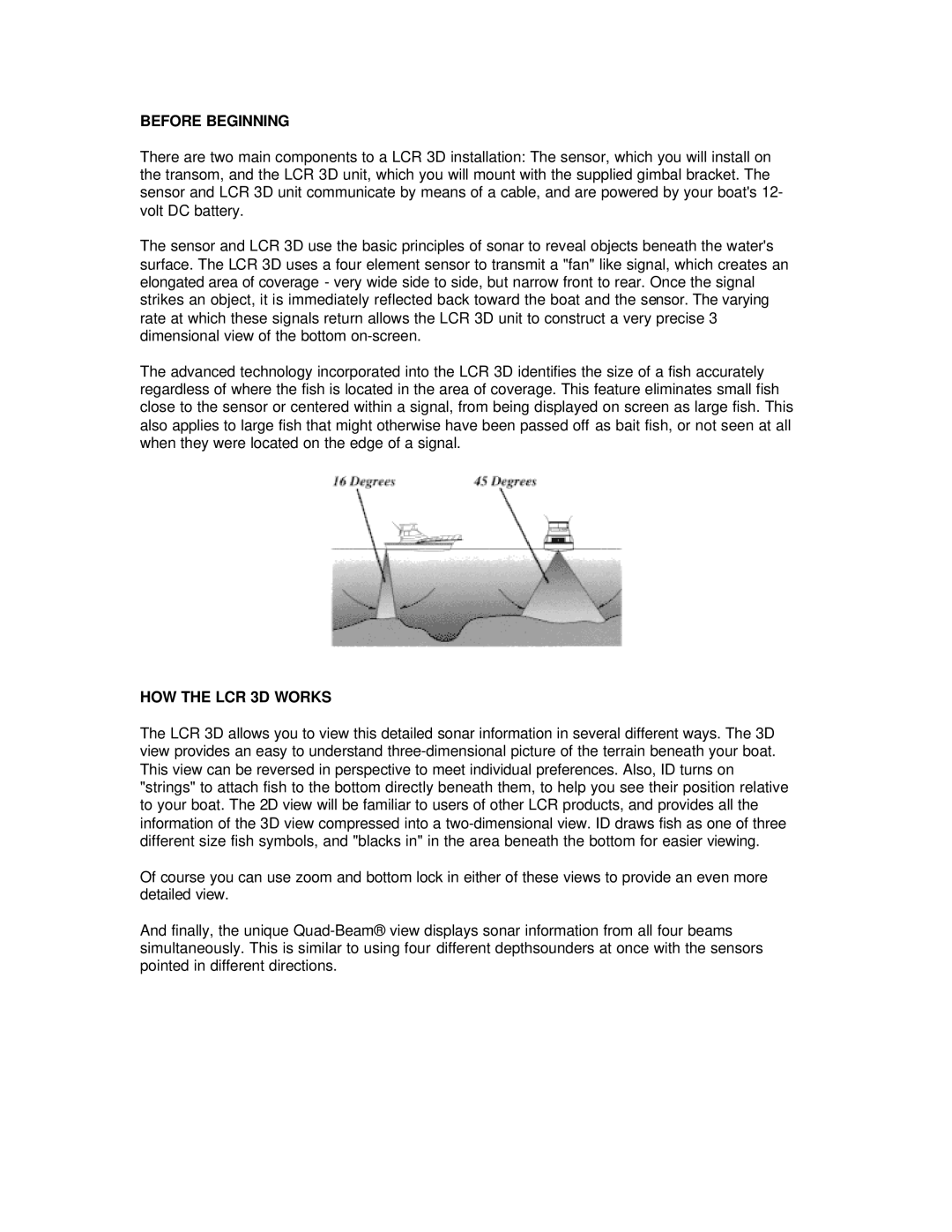
BEFORE BEGINNING
There are two main components to a LCR 3D installation: The sensor, which you will install on the transom, and the LCR 3D unit, which you will mount with the supplied gimbal bracket. The sensor and LCR 3D unit communicate by means of a cable, and are powered by your boat's 12- volt DC battery.
The sensor and LCR 3D use the basic principles of sonar to reveal objects beneath the water's surface. The LCR 3D uses a four element sensor to transmit a "fan" like signal, which creates an elongated area of coverage - very wide side to side, but narrow front to rear. Once the signal strikes an object, it is immediately reflected back toward the boat and the sensor. The varying rate at which these signals return allows the LCR 3D unit to construct a very precise 3 dimensional view of the bottom
The advanced technology incorporated into the LCR 3D identifies the size of a fish accurately regardless of where the fish is located in the area of coverage. This feature eliminates small fish close to the sensor or centered within a signal, from being displayed on screen as large fish. This also applies to large fish that might otherwise have been passed off as bait fish, or not seen at all when they were located on the edge of a signal.
HOW THE LCR 3D WORKS
The LCR 3D allows you to view this detailed sonar information in several different ways. The 3D view provides an easy to understand
Of course you can use zoom and bottom lock in either of these views to provide an even more detailed view.
And finally, the unique
